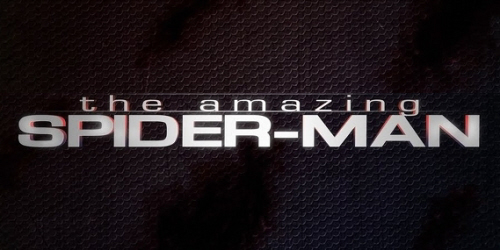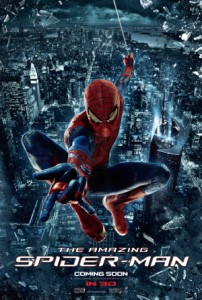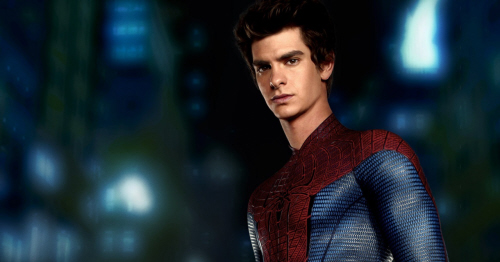
For The Amazing Spider-Man to be successful, Sony had two major tasks to accomplish. First, the film needed to entertain an audience that was always going to be jaded over a Raimi and Maguire-free Spider-Man. Even with their Spider-Man 3 a narrative mess, theatergoers are only five years removed from an almost-universally popular and profitable series of films (one that still feels peculiarly unfinished). Second, this new effort needed to convince us the necessity of its existence.
 And to these distinguished points, The Amazing Spider-Man succeeds – spectacularly on the former and moderately on the latter. A genuinely entertaining effort that injects newness into the proceedings while still paying the required amount of lip service to classic elements, there’s enough that works about this new take to recommend a viewing over the holiday weekend.
And to these distinguished points, The Amazing Spider-Man succeeds – spectacularly on the former and moderately on the latter. A genuinely entertaining effort that injects newness into the proceedings while still paying the required amount of lip service to classic elements, there’s enough that works about this new take to recommend a viewing over the holiday weekend.
Sony’s grand misstep has been their predisposition to retelling the origin. This is a script that could conceivably have Spider-Man on page one. Even before Raimi’s films, the vast majority of the audience is well-accustomed to Peter Parker and his maturation into the Spider-Man we know and love. Despite vast revisions, this origin will still feel eminently familiar. To the film’s credit, some aspects (Ben Parker’s demise in particular) are extremely well-handled and readapted in a manner that feels organic. Other elements (the webshooters, a skateboarding Parker) feel sloppy and tacked on for the sole purpose of being different from Raimi’s trilogy.
The film works better as a character study into Parker than an honest-to-goodness Spider-Man film. It doesn’t help that Spider-Man doesn’t show up until well into the second act. Webb, along with a screenwriting assemblage led by James Vanderbilt, takes his sweet time getting Andrew Garfield’s Parker into the suit. All the beats are hit: bullying, nerding out in the lab, setting up Gwen Stacy, killing Uncle Ben – only now we also have the added complication of the burgeoning mystery of what happened to Peter Parker’s parents.

Garfield’s Spidey can hopefully look forward to a bright future on the big screen.
In Amazing, it’s Peter’s search for answers in his parents’ demises that lead him to Oscorp Building and the genetically-enhanced spider that will ultimately determine his fate. Rumors leading up to release have hinted at Sony getting cold feet in regards to the ‘rents. And in this one aspect, Amazing feels like an incomplete story. A mystery’s set up in the beginning only to be completely abandoned in the second half, as in it’s not brought up again*. All we really know is that Parker’s dad was doing something with spiders – but the movie diverges from a logical conclusion that, in this instance, might not be such a bad thing. Parker’s heroism needs to be of his own volition, I suspect that might not have been the case in earlier cuts tested for audiences.
What could have been a gaping hole becomes a minor gripe, because with so much of The Amazing Spider-Man working, its few inconsistencies can be forgiven. Andrew Garfield is a masterful Peter Parker. Admittedly, this new Parker is for a younger generation than my own – skateboarding around sporting hipster mittens and a smarmy façade. He’s a nerd, but now he’s the cool nerd. Garfield works through it and emerges as a Parker that feels every bit as earnest as Tobey Maguire’s did. There’s a certain amount of angst emanating, but it’s true to a story and an age that represent Spidey’s teenage beginnings.
He makes impulsive decisions that put people in jeopardy for what he thinks to be a greater good. There’s a scene where Dennis Leary’s Captain Stacy where he informs Peter that Spider-Man busting a carjacker disrupted a sting that could have netted bigger fish. It’s the sort of oversight that feels indicative of a guy who’s new at this whole superhero thing. This is a Peter Parker that is reckless, brazen, stupid even.
The film’s heart truly belongs to the relationship between Parker and Gwen Stacy (played with great, teenybopper aplomb by Emma Stone). Two kids who like each other that get mixed into an extraordinary situation, Garfield and Stone’s best scenes are together. There’s an exchange in the hallway of the school that’s gooey and awkward and all the things a young romance should be. The characters develop on screen in tandem, with Stone absolutely nailing Stacy. Exuding a magnetic braininess and those trademark thigh-highs, her presence is welcomed. It’s the stereotypical girlfriend role, but Stone injects enough liveliness to raise it to something more.

Garfield and Stone make a very watchable onscreen couple.
Amazing‘s a well-acted piece for certain. Sally Field plays her character as someone who could grow into the silver-haired Aunt May we know and love. And it’s not hard to look at Martin Sheen and realize he is Uncle Ben. Unfortunately (aside from Garfield) the one performance that really needed to connect here does not, and the film’s worse because of it.
It’s not that Rhys Ifans doesn’t do his best to breathe life into Dr. Curt Connors, the once and future Lizard. It’s just that Connors is a wholly underwritten character, glaringly so. It isn’t until Peter comes along that Connors finally has the science he needs to regrow his missing arm. But the turn from seemingly nice guy Connors to menacing Lizard never works as it should. Like many a Spidey villain, he turns his experiments on himself. And then he’s evil and wants to break shit. His grand plan is that, now that he’s a lizard, maybe other people will want to be lizards too – that’s it. So he works toward that goal and when Spider-Man needs something to stop in the final act, this fits the bill. Does Connors have a family? A life outside of his work? Is there anyone, anywhere who cares about this man or the fact that he’s out and about, lizarding around?
The computer-generated Lizard fares no better, as his generic facial expressions do nothing to set him apart from the Goombas, last seen in the live action Super Mario Bros. Lizard isn’t as campy as Topher Grace’s Venom or ill-conceived as Thomas Hayden Church’s Sandman, but he’s also a far cry from Willem Dafoe and Alfred Molina’s work in earlier films. Aside from James Horner’s atrociously unfocused score, most of the film’s failings rest around its weak-ass villain.

A villain that will leave you longing for Willem Dafoe and that bulky Power Ranger suit.
The real reason to see The Amazing Spider-Man is its astonishing effects, sight and sound. That’s not a hollow endorsement, as there’s a real semblance of weight in Spidey’s aerial shots. A slight rustle of wind as he cuts through the air, a minor thudding as his foot scrapes the side of the building – these sounds add credence to some spectacular visuals. And director Marc Webb’s shameless usage of 3D puts most others working in the medium to shame. You get a sense that Webb reveled in the gimmickry of it all, as he throws shit at the screen at every turn. The immersive depth of recent 3D films becomes trivial as Webb reminds us that this is the way to use 3D – crashing beams, swinging webs and crumbling landscapes for the audience’s entertainment. It gives the action an almost stunt show quality (not a bad thing given the subject matter) as it puts the wreckage in your lap. This is action-entertainment that demands to be viewed as I saw it – with the benefit of IMAX 3D.
The Amazing Spider-Man has always been a highly questionable endeavor. I’m pleased to discover it’s also an entertaining one. Kudos to Marc Webb for directing an action spectacle that made me care where they go from here; and to Andrew Garfield for giving us a fresh Peter Parker that audiences will want to root for. The webs are now Garfield’s to sling. They’re in capable hands.




Out of a Possible 5 Stars
Follow Tim on Twitter: @roboTimKelly
*With the exception of the post-credit sequence, this aspect is divorced from the film early.